I’ve cooked in and run professional kitchens for over a decade. And when you think about it, running a restaurant kitchen is really just a whole lot of meal planning. Only, instead of planning for 1 or 2 meals a day, you’re planning for hundreds.
Sure, there are a lot of differences as well. But, I’ve been able to take a lot of what I learned and practiced in a professional setting and applied it to my approach to meal planning at home.
On the surface, a good meal plan may seem like a lot of work. But, by following some simple guidelines and principles, you’ll feel like a pro in no time, and wonder why you haven’t tried it sooner.
In This Article
What Is Meal Planning And Why Should I Do It?
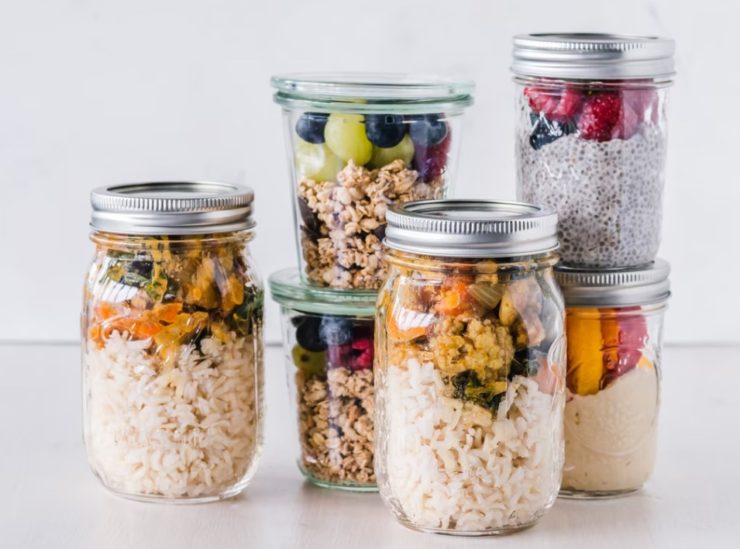
Meal planning is as simple as deciding what you’re going to eat ahead of time. You could plan one day at a time or even an entire month. But, both of those end up being more trouble than they’re worth and are very difficult to follow through with.
Planning meals out for a week at a time is the sweet spot. It’s easy to schedule and keep track of, plus it allows you to make just one or two trips to the grocery store each week.
Planning your meals ahead of time comes with a whole list of benefits.
- Saves money and is easier to stick to a budget
- Can help you eat healthier (if you want to)
- Saves time throughout the week
- Removes the stress of deciding what to eat every day
- Reduces food waste
- Easier to stick to specific diets
No matter what your motivation is, there’s really no reason not to do it. And don’t worry, there’s always plenty of room for spontaneous meals and eating out at your favorite restaurants.
Here are our 8 tips for staying under budget.
Start Meal Planning In Four Easy Steps
1. Make A List Of Meals You Love
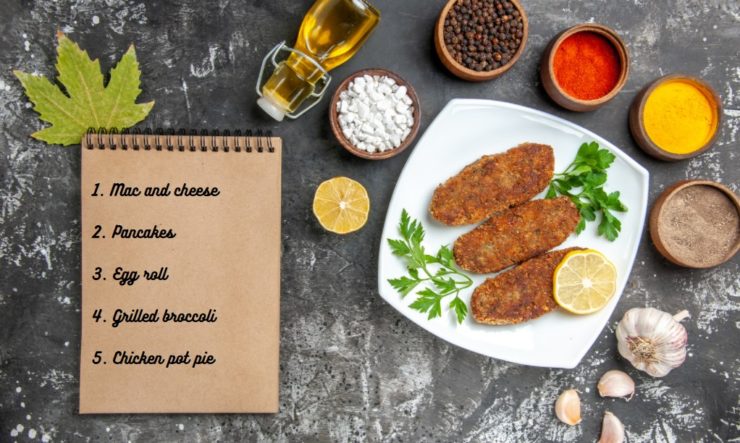
This can be one of the most fun steps, and often gets me excited for the weeks ahead. To begin with, grab a piece of paper (or your device of choice) and start writing down the meals that you and anyone else in your house enjoy.
This first edition of your list can be as short or long as you’d like. But, you should try to have several go-to options that aren’t too difficult and don’t require too many ingredients. Those will be great options for the days that you’re short on time and maybe haven’t been to the grocery store in a while.
While you can definitely have some elaborate meals on this list, it’s important to be realistic about the dishes that you’ll be able (and want) to cook. Especially in the middle of the week when schedules can be a bit hectic.
As your list of meals and recipes grows over time, it can be really helpful to start organizing it into categories. You could have separate sections for beef, fish, soups, salads, etc.
Google Docs is a great (and free) tool for this, and it’s easy to share among family members. But there are also tons of specialized list-making apps you can find as well.
Not only does this help keep things organized, but it can also make the weekly planning process a lot easier. You’ll be able to quickly pick items from the various categories so that you have a good variety without having to think too hard.
2. Take Inventory Of What You Already Have

Depending on the state of your fridge and pantry, this could be quick and easy, or it might take a little time.
The goal here is to incorporate the ingredients you already have into your meal plan. This will help you save money, avoid wasting food, and help make your meal decisions easier. It’s also a great opportunity to get rid of any old ingredients that have gone bad, or you know you’ll never use.
Once you know what you already have, take a look at your master meal list. Check and see if you have the ingredients to make or at least get started with any of those meals. If you do, it might be a good idea to pick some of those menu items for the upcoming week.
In professional kitchens, we call this First In First Out (FIFO). It’s a simple idea that helps you use older items first, before bringing in new ones. It’ll help you burn through ingredients so your pantry doesn’t get overwhelmingly full. And hopefully, it will be the end to the three partially used bags of sugar and five half-empty mustard containers that seem to multiply when nobody’s looking.
3. Create A Schedule
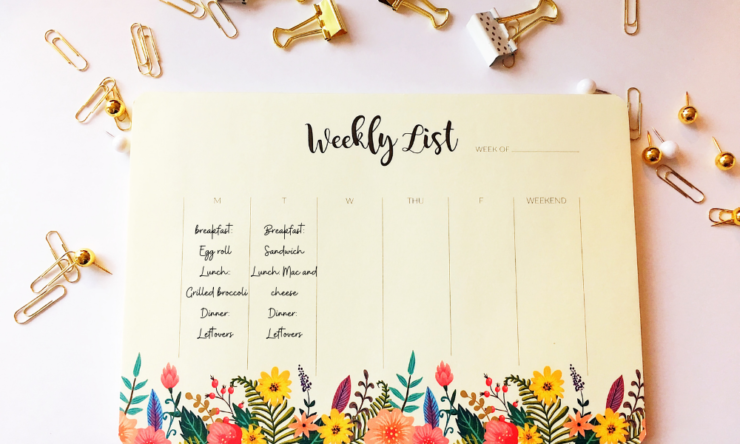
Choosing what meals you’re going to eat on what day seems simple, but it can make or break the success of your meal plan.
It’s up to you how many days a week you want to plan for. You can decide to do this for breakfast, lunch, and dinner 7-days a week, or just stick to a handful of dinners. For me, having a plan for weeknight dinners is the most helpful, since those are the days where schedules can be tight.
Now, fill in your chosen meal times with items from your master list. Pay attention to how much time a specific recipe is going to take and how much time you think you’ll have on that day.
On a day that you’re particularly busy, you may want to choose a salad that can be chopped and quickly mixed together without much or any cooking involved.
Also, don’t be afraid to add take-out or something from your freezer into the schedule. Just because it isn’t made from scratch doesn’t mean it can’t be part of your meal plan.
4. Try To Cross Utilize
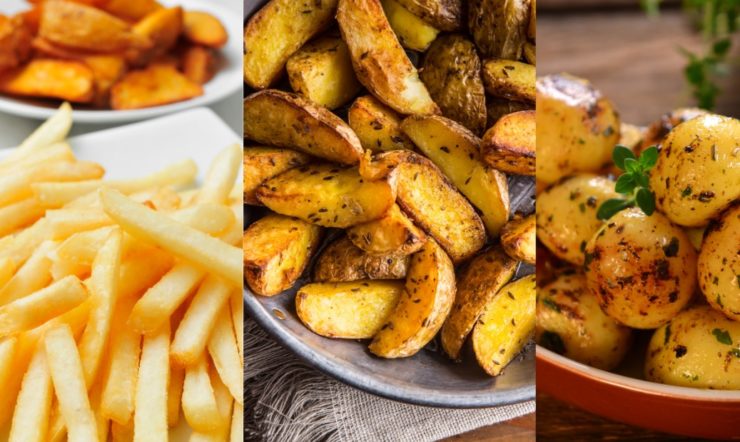
“Crossy utilization” is a cornerstone of successful restaurants, and it’s one of the keys to saving money with your meal plan.
When you’re creating your weekly meal schedule, see if you can use the same ingredients for multiple meals. Buying fewer items but more of them can lead to big savings, and it’s the best way to take advantage of buying in bulk.
You probably don’t want to eat chicken every day. But, one idea is to roast a whole chicken one day, and use the leftovers for soup, salad, or fried rice later in the week.
Just another simple idea that can take a little practice, but gets easier the more you do it.
5. Make A Detailed Grocery List And Stick To It
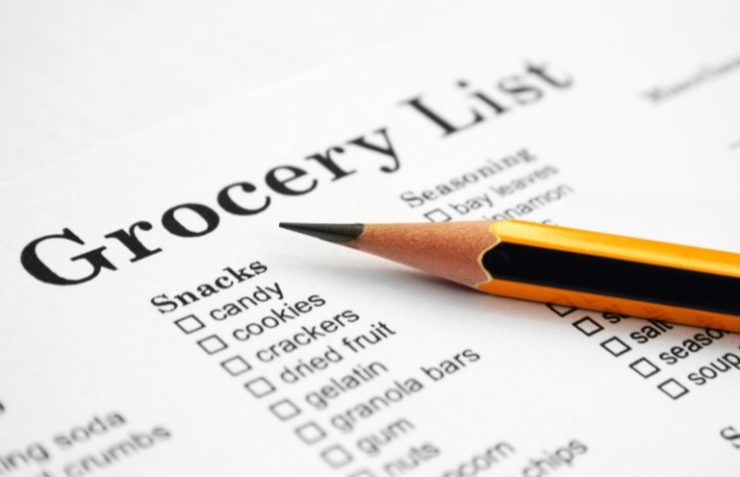
This step is easy, as long as you can practice a little self-control.
Using the meals that you’ll be eating the following week, along with the inventory you already have at home, make a grocery list of everything you’ll need.
On top of the ingredients for your scheduled meals, make sure you add some staples for snacks and any meals that are not on your schedule.
Things like, bread, yogurt, and fruit are things I like to have on hand for snacks or easy breakfasts on the go.
And now for the hard part. When you’re at the store, STICK TO THE LIST.
6. Do Some Prep Ahead Of Time, And Thank Yourself Later
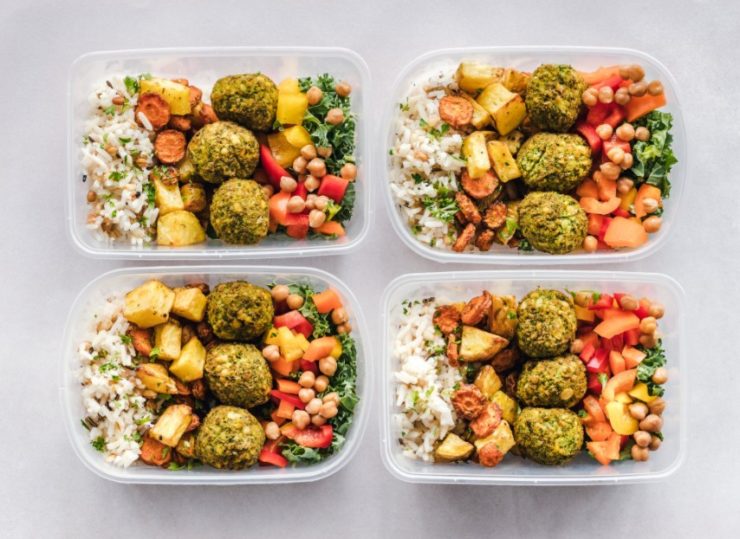
Pro cooks rely heavily on mise en place. A fancy word for being prepared before you start cooking.
This isn’t always possible with some of our busy schedules. But, a little bit of prep ahead of time, can be a huge help when it comes to getting dinner on the table at a reasonable time.
Now, I’m not talking about anything crazy here. Just a few knife cuts here and there. If you’re using diced onions or peppers one night, and you’ll be using them again a few days later (cross-utilization!), simply cut a little extra so it’s one less step you’ll have to do later in the week.
7. Take Notes Along The Way

Meal planning can take some practice and getting used to. But, I guarantee that it gets easier the more you do it. And one of the best ways to ensure your success and keep with it is to take note of what works, and more importantly, what doesn’t.
This is another place where an electronic note system is very useful. I keep a master list of meals and recipes that I can easily access from my computer or phone. That way I can quickly edit and add notes without having to physically write and rewrite my list over and over.
If one meal took longer than you expected, or just wasn’t very good, make a note of it. That way you’ll be reminded to make adjustments the next time you make it or to remove it from the rotation altogether.
On the other hand, if something was a big hit or super easy to throw together, make a note of that. Soon enough, you’ll have a whole section of favorites that will make the whole planning process a breeze.
Your master list of meals and recipes should change and grow over time. And, while it will make meal planning easier and easier, it will also become an amazing resource. One that you can turn to when cooking for special occasions, or when a friend needs a recommendation for a go-to weeknight crowd-pleaser.
Stick With It

No matter what your motivation is, meal planning is a great way to eat better, save money, and cook more of your own meals. While it may seem like a lot of work at first, sticking to these 7 principles will make it feel like second nature in no time.
If you’re just starting out or you’re a home cooking vet, sign up for our email newsletter to learn about more tools, techniques, and culinary principles.







